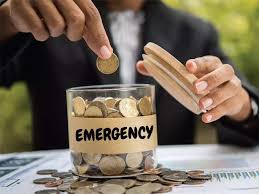Lorem ipsum dolor sit amet, consectetur adipiscing elit.
Date : 15-jun-2020
News Details

Update Date : 13-Dec-2024
Created Date : 28-Jun-2022
Reference : Money Control
Self-employment comes with a certain degree of financial risk. Unlike salaried people, you don’t have the peace of mind that comes with a fixed monthly paycheck. You also don’t get any insurance coverage or retirement-specific provident fund (PF).
All in all, the self-employed are really on their own and fully responsible for everything. This includes being financially prepared for all events.
Here is how to handle your finances if you are self-employed with irregular cash flows.
BUILD A ‘LARGER’ EMERGENCY FUND
Everyone should have an emergency fund. However, those with erratic income should have a larger buffer.
The thumb rule is to set aside an emergency fund for about six months’ expenses. For the self-employed, it might be a better idea to have a bigger fund. But how big?
It depends on the volatility in your cash flows, the probability of low/no income for a few months, whether you are the sole earner or have an earning spouse, etc. So a fund that can take care of 12 months’ expenses might be a good one.
So, what should be accounted for in the fund? Not just rent expenses, education fees, food and medical expenses, transportation, communication, equated monthly installments (EMI), and so on. Also include monthly equivalent figures of annual expenses (like insurance premiums, repair maintenance, car servicing, unavoidable travel, etc.)
The purpose of a larger-than-usual emergency fund is to improve your financial preparedness to handle unexpected events smoothly. It gives you a cushion to ride through any rough patches that might come your way.
WHERE SHOULD YOU INVEST OR PARK YOUR FUND?
If you want to keep things simple, stick with simple fixed deposits (FDs). Or, put a small part in the savings account and opt for a Flexi-Sweep-In deposit.
If you want to optimize for better post-tax returns, a combination of FDs and debt funds (liquid funds and/or ultra-short duration debt funds) would work as well.
NO OFFICE PROVIDED HEALTH INSURANCE
This is a no-brainer. Being self-employed, you don’t have any employer group health coverage. So, you need to have a health insurance policy that covers you and your dependents.
Have a cover of at least Rs 15-20 lakh. You can even consider a top-up coverage over any base health plan you may already have to increase your coverage.
Do not ignore this as one single uninsured hospitalization can wipe off a major part of your savings. And when you are self-employed, it can really turn into a nightmare pretty soon.
GET A TERM INSURANCE
Another no-brainer. Buy it soon, if you still haven’t. The idea is to provide some level of income replacement, in case the primary earner of the family (which is self-employed in this case) is no more.
Get yourself a cover of at least 10-20 times your annual income. But this is just a broad stroke. Figure out how much life insurance you really need, and buy it. Any lapse on your part, your family’s life and your goals can get badly hurt after you.
Term plans are very cheap and provide sufficiently large coverage for a very small premium. So there can be no reason for not going for them. Once you have taken care of the risk, comes another important part.
HOW TO INVEST AN IRREGULAR INCOME?
For those with regular income, it’s easy to set monthly SIPs (Systematic Investment Plans) and invest periodically.
But for those whose income comes in peaks and troughs and is irregular, it can be difficult to invest properly. What eventually happens is that these people end up buying random products here and there (when they have extra money). As a result, after a while, it becomes a directionless clutter of a portfolio.
Here’s what you should do. Whenever you get surplus income, invest it lump sum in debt funds first. And then use Systematic Transfer Plans (or STP) to transfer a fixed amount every month to equity funds.
This way an artificial regularity will be created in equity investing and you can gradually accumulate a large corpus for your long-term financial goals. This approach ensures that goal planning is not interrupted.
As self-employed, you also do not get the benefits of the Employees’ Provident Fund (EPF). This is one of the best retirement tools available to salaried people. What is your alternative?
Make lump sum investments in the Public Provident Fund (PPF), National Pension Scheme (Government securities and corporate bonds plans) and so on. This would also take care of your debt allocation in your overall portfolio.

Date : 15-jun-2020

Date : 15-jun-2020

Date : 15-jun-2020

Date : 15-jun-2020
Leave a Reply
You must Login for Leave a Reply.
Comments (0)